I have now tried various light grey colors from Humbrol.... 129, 166, 195, 147.... and none of them give satisfactory results. NONE of them get that cold, grey shade that the color charts indicate. What I do get is warm, creamy shades... shifting slightly in light brown and/or green. I tried another shade of grey, 127, which DOES look cold... but it also looks much too green.
I've bought several of all these colors, and each tin gave the same result... I have stirred properly; indeed, the 129 looked exactly right for a little while when the pigment started blending... but when I had finished stirring it was... almost khaki.
I guess I could try blending colors, but I don't know which ones. If it helps, look at this box where you write your post; The grey I want is along those lines.
But what is it that is wrong? And why does this ONLY happen to grey (medium and light shades) colors for me?
Any help would be appreciated. <.<
I've bought several of all these colors, and each tin gave the same result... I have stirred properly; indeed, the 129 looked exactly right for a little while when the pigment started blending... but when I had finished stirring it was... almost khaki.
I guess I could try blending colors, but I don't know which ones. If it helps, look at this box where you write your post; The grey I want is along those lines.
But what is it that is wrong? And why does this ONLY happen to grey (medium and light shades) colors for me?
Any help would be appreciated. <.<

